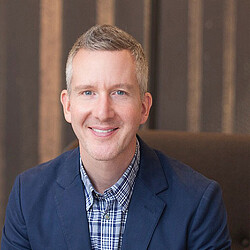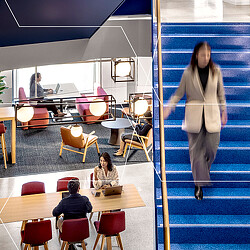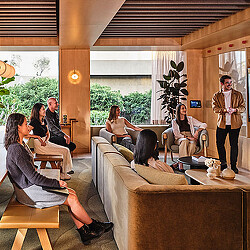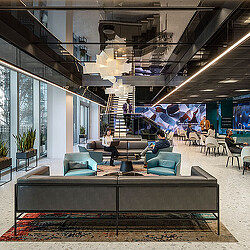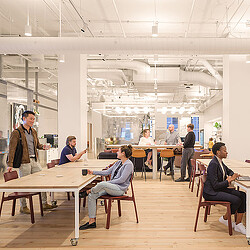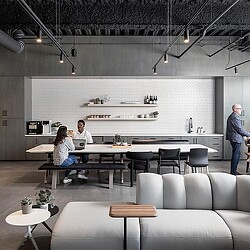A Multigenerational Workforce Demands Multigenerational Design
Employees over 65 are defying stereotypes and redefining expectations. Organizations that design with them in mind won’t just gain an edge today — they’ll shape the future of work.
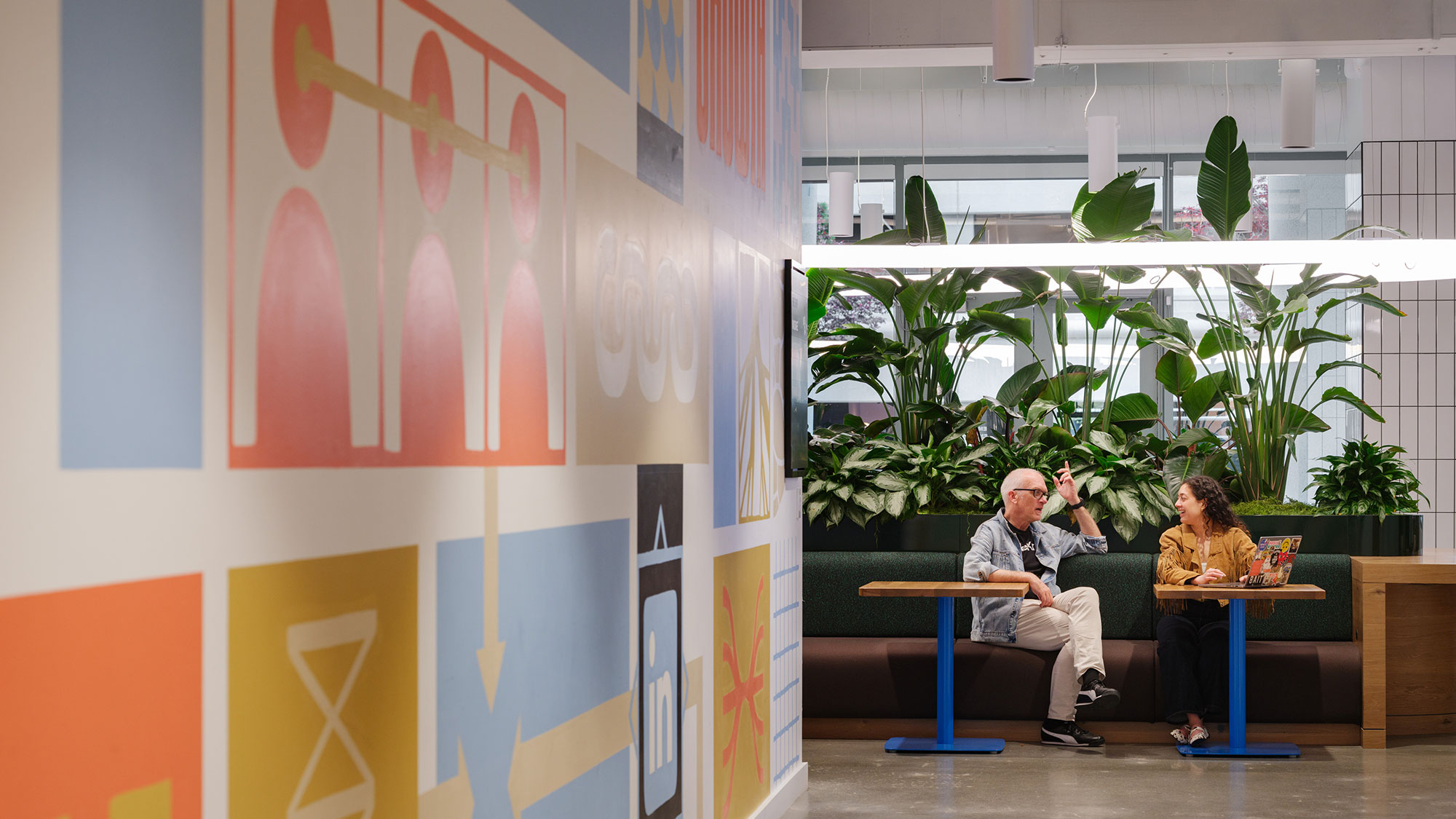
Editor’s note: This is the next post in our series on the aging workforce. Read part one here.
For decades, conversations about the future of work have centered almost exclusively on younger generations. We studied how to attract, engage, and retain new talent entering the workforce, tailoring workplace experiences to meet their expectations. That made sense — workforce growth has historically been driven by younger workers.
But today, that growth engine is shifting. The fastest-growing segment of the U.S. workforce is no longer its youngest entrants, but its oldest veterans: employees 65 and older.
This demographic transformation challenges many of our long-held assumptions about work and the workplace. It also offers organizations an important opportunity: to reimagine the workplace as a strategic advantage for attracting, supporting, and retaining older workers alongside every other career stage.
An Overlooked Segment Steps into View
Working past retirement age is not a new phenomenon, but historically, the number of people choosing to do so has been too small to attract much attention.
That dynamic is changing. Fewer births, longer lives, and shifting cultural expectations have moved workers over 65 from the periphery of the workforce to a much more substantial role. And due to demographic, economic, and cultural forces, their numbers and influence will only grow.
Yet despite their rising importance, relatively little has been explored about how workplace design impacts this group. What do they need to succeed? What keeps them engaged? And how can the physical environment become a reason for them to continue contributing their skills, knowledge, and perspectives?
These questions guided the creation of a new line of inquiry in the 2025 Gensler Global Workplace Survey.
A Career-Stage Lens on Workplace Experience
Since its launch in 2005, the Gensler Workplace Survey has expanded in both scale and scope, with this year’s study involving over 16,000 respondents across 15 countries. While the survey has explored workplace performance through a generational lens, this year we decided to look at the survey results through a related but distinct framework: career stage. We segmented our respondents into four career stages: early career (18–29), mid-career (30–49), later career (50–64), and extended career (65+). Because of retirement age variations across the global pool, for the purposes of this analysis, we looked only at respondents in the United States.
The findings both confirmed some expectations and challenged several long-standing stereotypes.
Key Findings
1. Older workers thrive in high-performing workplaces.
Extended career respondents reported the highest workplace performance scores of any cohort, as measured by Gensler’s proprietary WPIx.
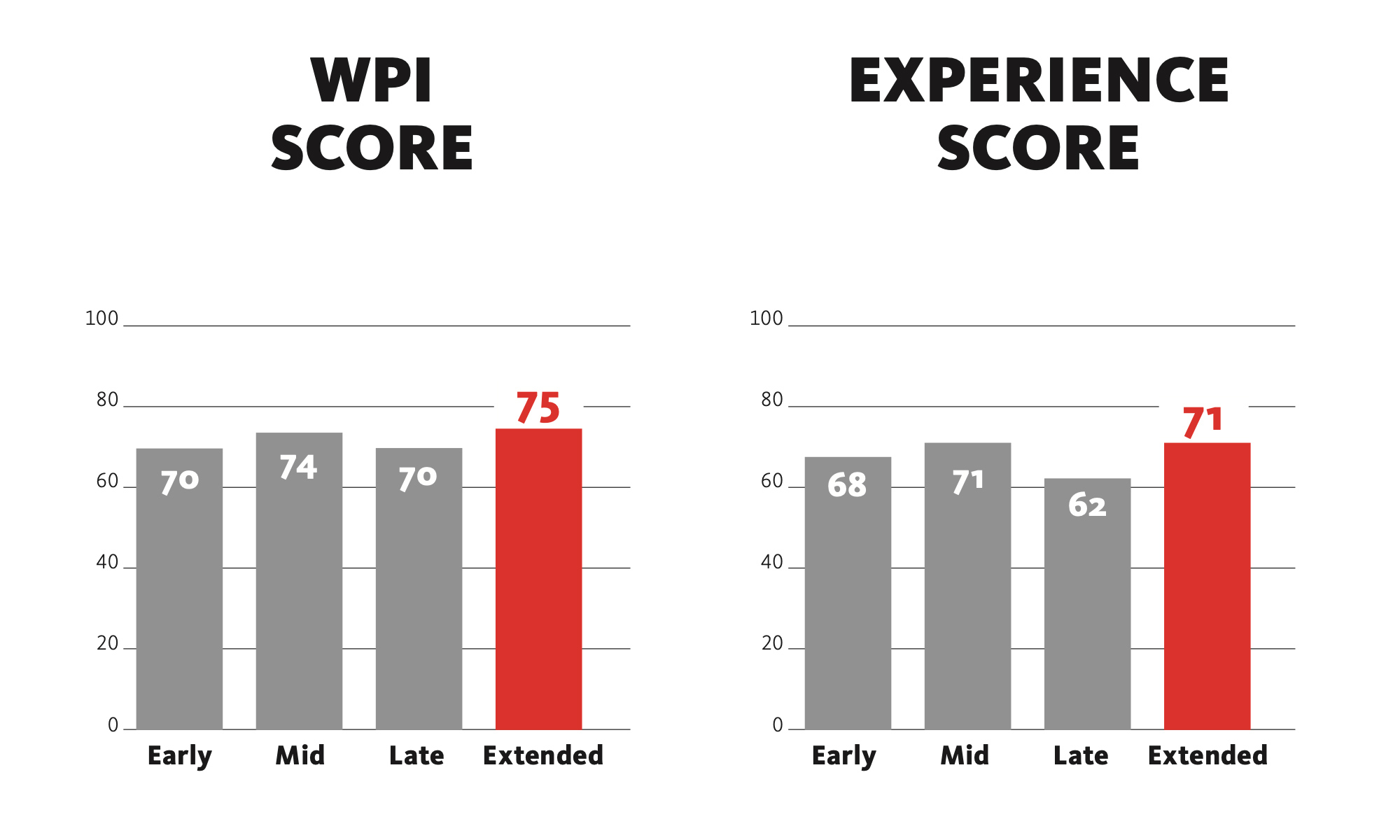

Source: 2025 Gensler Global Workplace Survey.
2. Older workers are getting more from their work.
The extended career cohort consistently reported the highest job satisfaction of all career stages, as well as stronger connections to their company, and greater clarity about how their work contributes to the organization’s mission. They feel recognized and valued — and their responses reveal a high degree of pride, energy, and focus in their work.
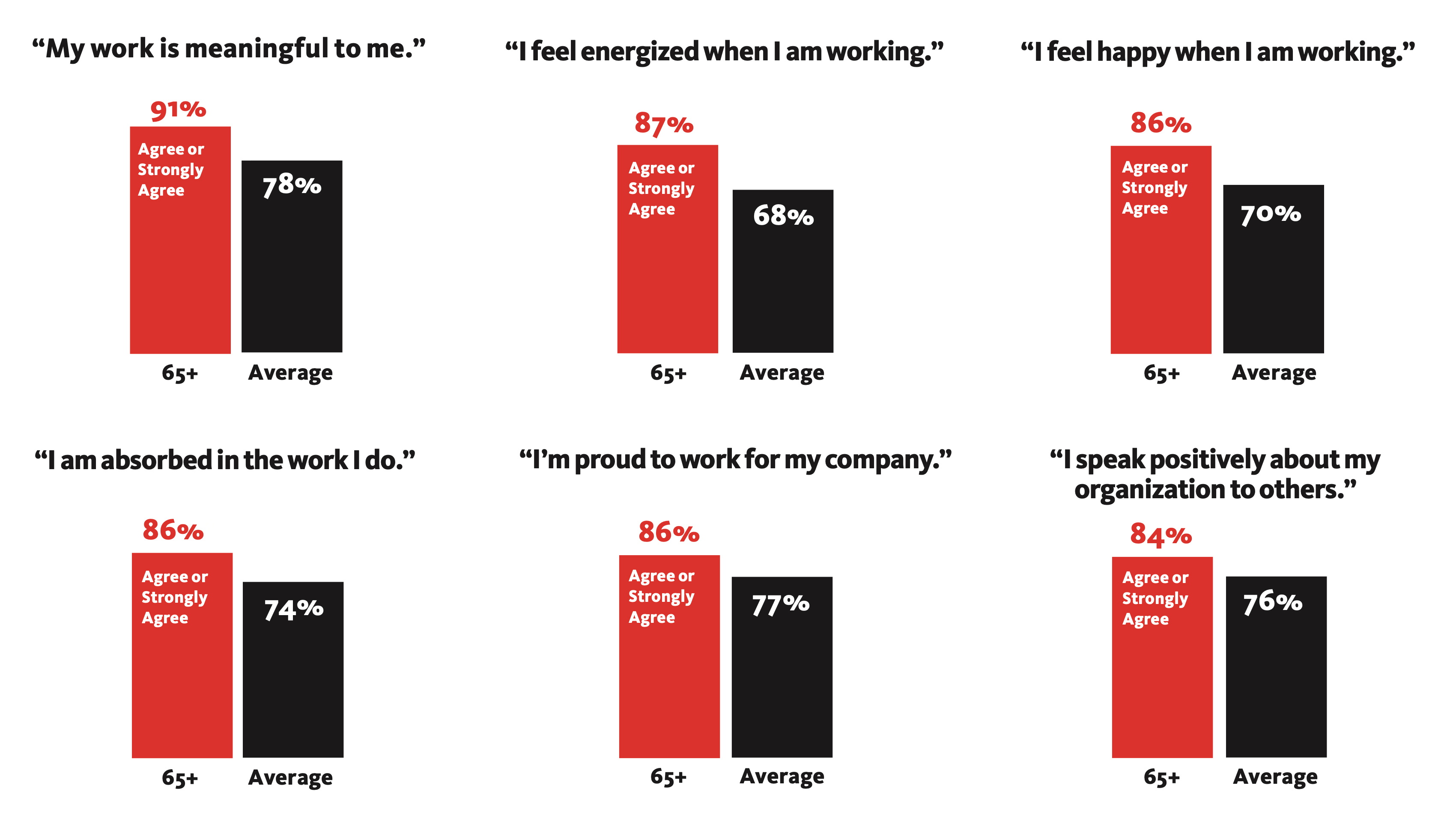
Source: 2025 Gensler Global Workplace Survey
3. They are loyal — and willing to go above and beyond.
Ninety-one percent of workers 65 and older said they were likely to stay with their organization over the next year and are willing to go beyond job requirements — the highest of any group we surveyed. For organizations encouraging employees to return to the office, this group is already on board. Nearly two-thirds said they prefer working full-time in the office — 20% higher than those in mid- and later career, and almost 30% higher than early-career employees.
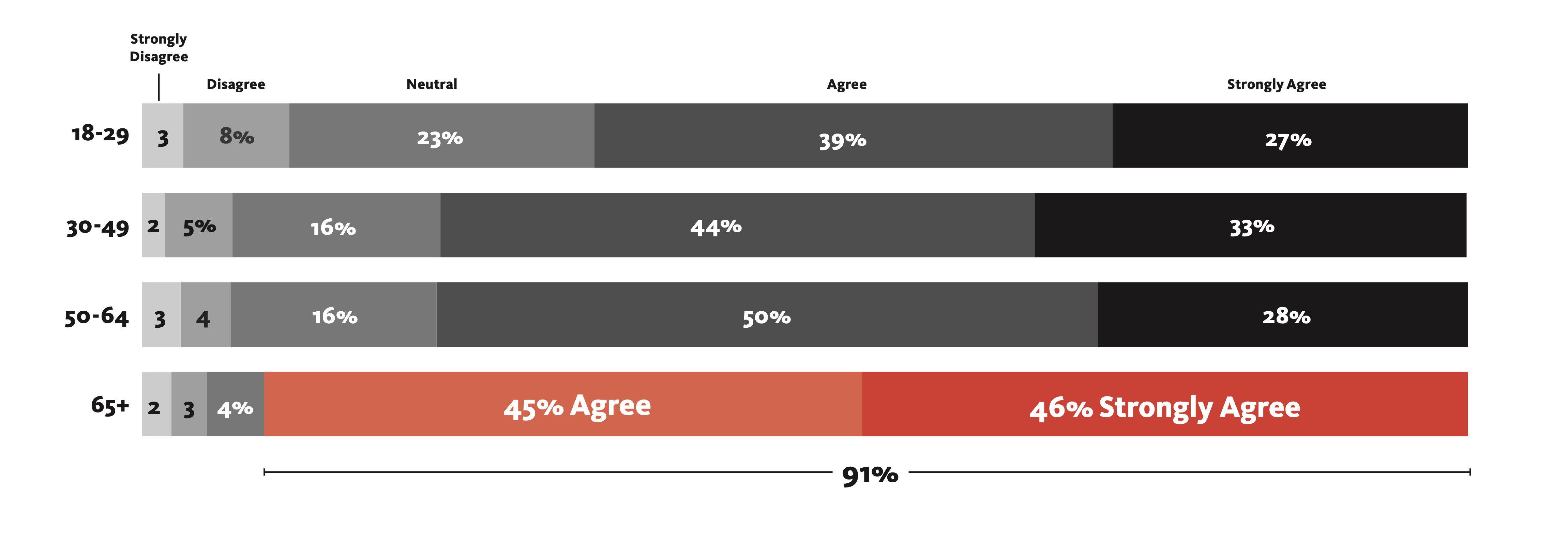
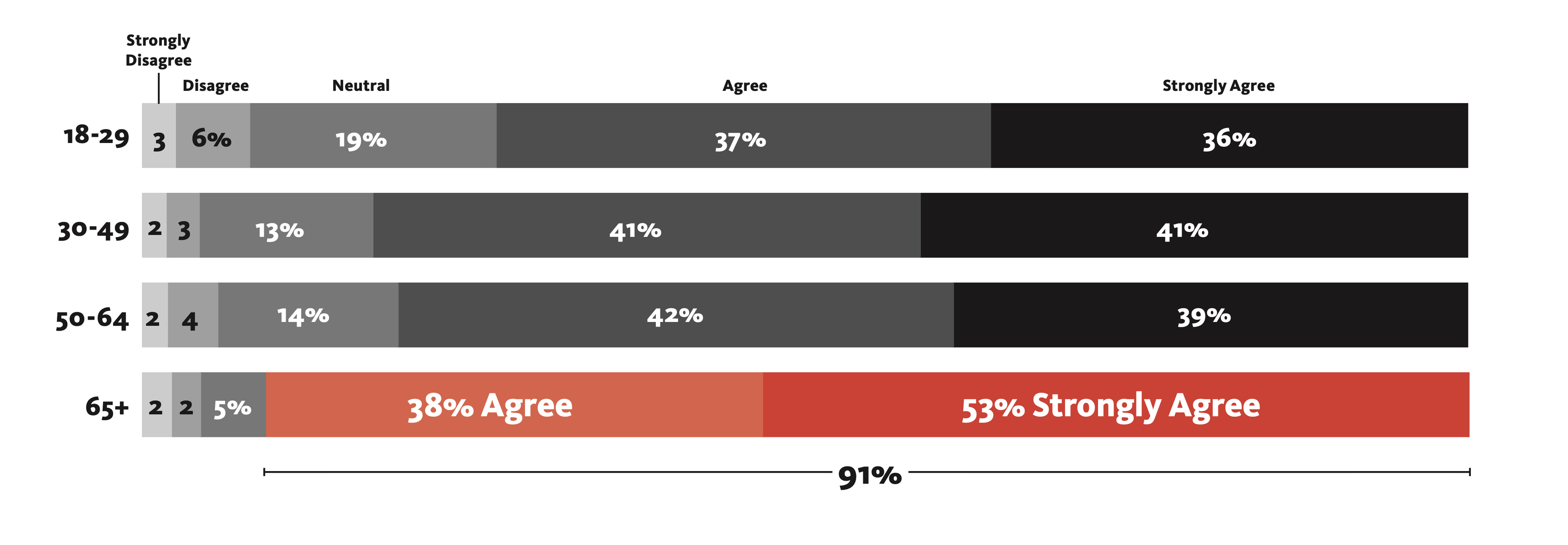
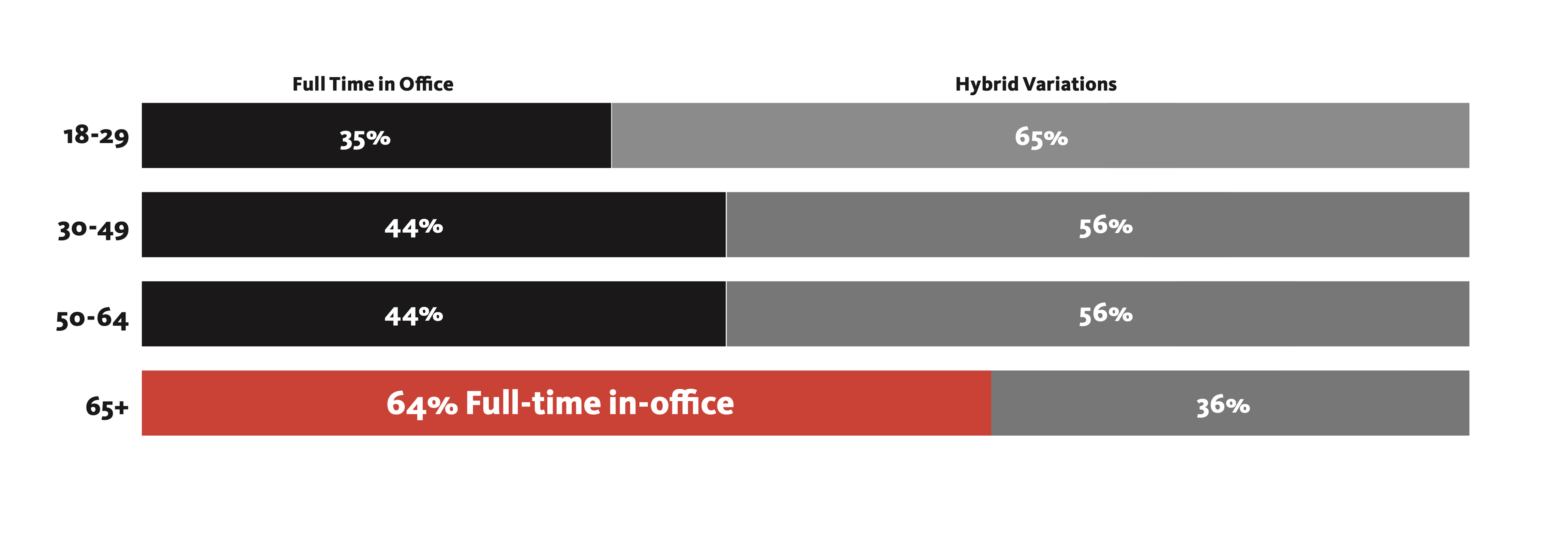
4. They work much like everyone else.
When it comes to the five primary modes of knowledge work — working alone, collaborating in person, collaborating virtually, learning, and socializing/networking — older workers look strikingly similar to their younger peers. The only notable difference: Extended career workers spend about 5% less time collaborating in person, distributing that time evenly across the other work modes.
5. They defy stereotypes.
Perhaps the most surprising finding: workers over 65 showed the least preference for private environments and the strongest preference for open ones.
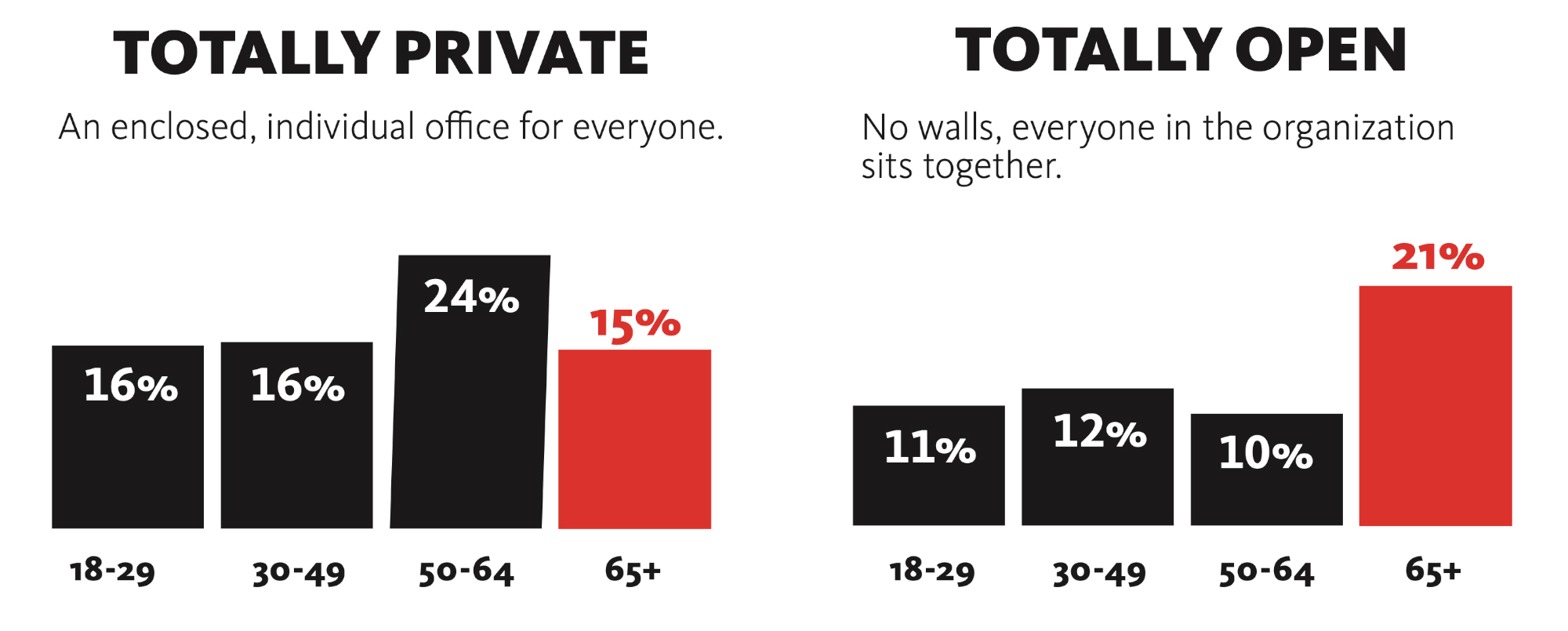
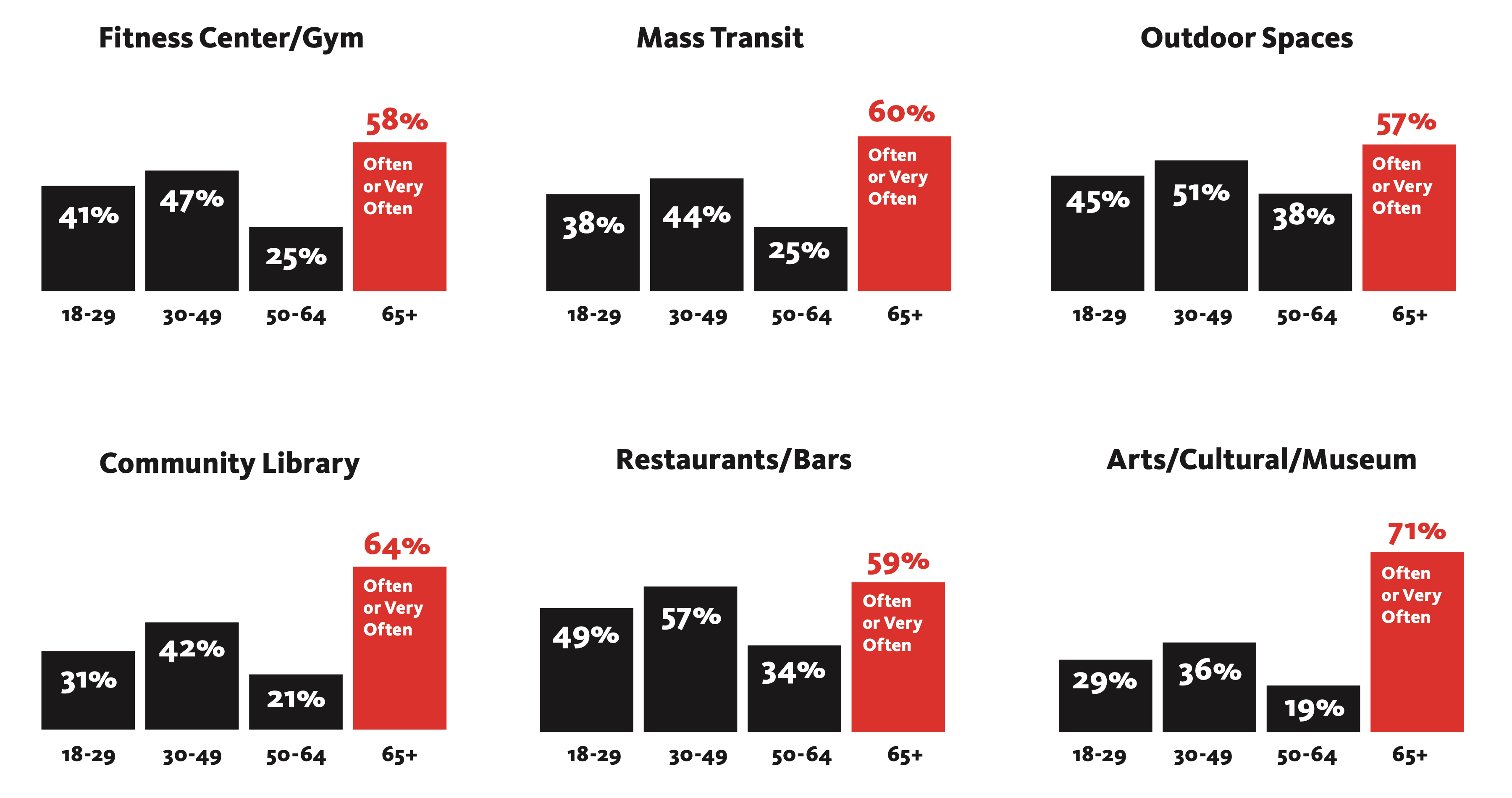
These findings challenge common assumptions about older workers being disengaged, resistant to change, or focused solely on “just getting the job done and going home.” Instead, they paint a picture of highly engaged, curious, and connected employees who continue to seek rich, interactive experiences at work.
What the “Graying Workforce” Means for Organizations
The “graying of the workforce” is not a distant scenario — it is unfolding now. The average age of the U.S. workforce continues to rise, and with it, the presence and influence of older workers.
Organizations face a choice: adapt to this new reality or risk losing out on the value this cohort brings. The physical workplace is a powerful tool in that adaptation. As the most visible and tangible expression of an organization’s culture and values, the workplace communicates what — and who — matters.
By designing environments that support older workers while also engaging employees at every career stage, organizations can demonstrate inclusivity, strengthen loyalty, and unlock the full potential of a truly multigenerational workforce.
Design Implications
Our findings point to several actionable ways organizations can adapt their workplaces to support older workers — and, by extension, create environments that work better for everyone:
- Prioritize high-performance environments. Extended career employees thrive in workplaces that score higher on performance and experience. Investing in environments that enable focus, collaboration, and well-being pays dividends across all career stages.
- Design for loyalty and engagement. Older workers report the highest levels of commitment and pride. Workplaces that reinforce belonging, recognition, and clarity of purpose will help sustain these strong connections.
- Rethink stereotypes in design. The assumption that older workers cling to traditional workplace settings is no longer valid. This cohort embraces openness and actively uses workplace amenities. Designing rich, interactive environments can strengthen engagement across all age groups.
- Design inclusively for all career stages. While older workers have distinct strengths, their workstyles are not radically different from others. Multigenerational design ensures environments are adaptable, supportive, and engaging for employees at every stage of their careers.
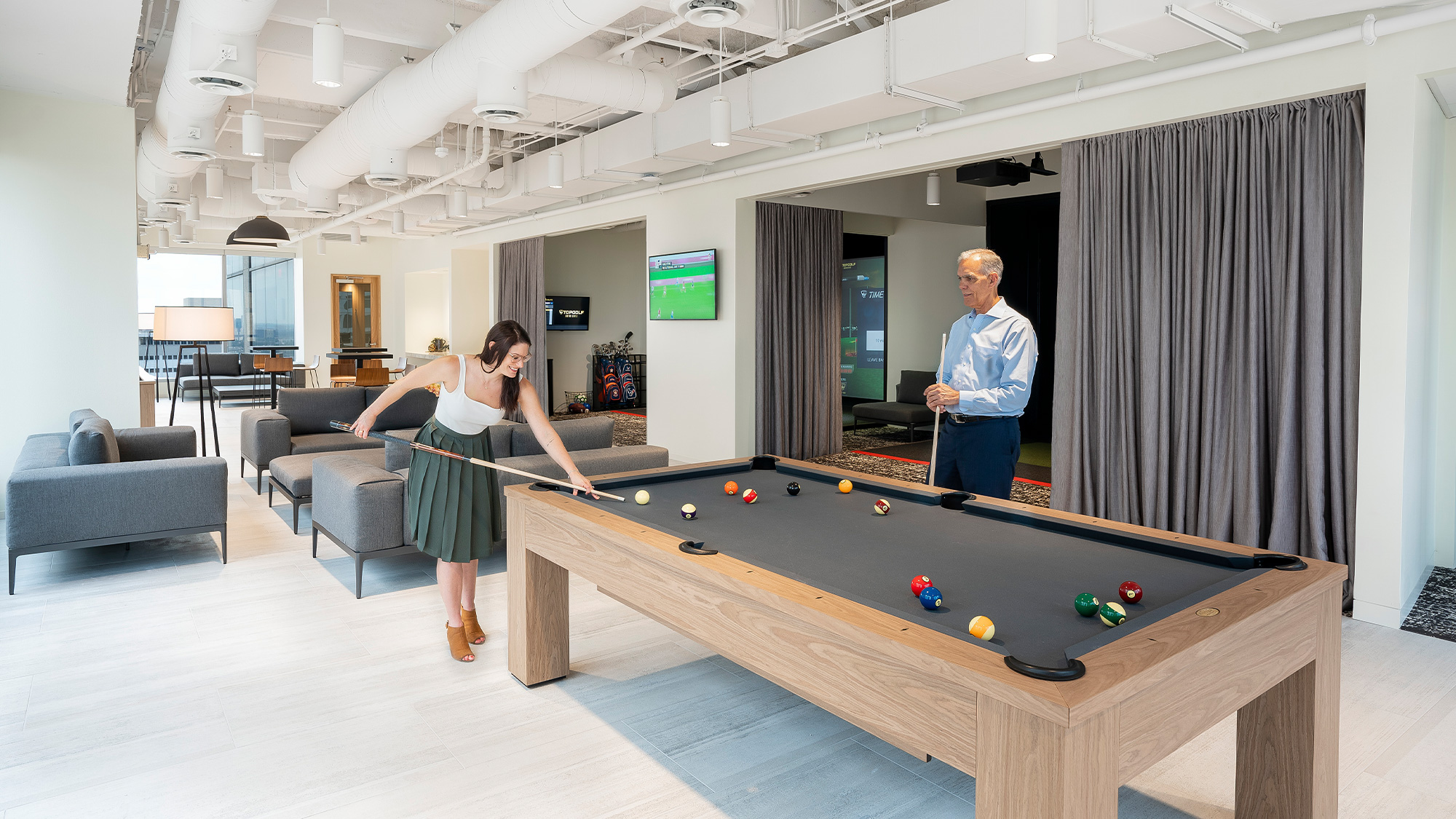
Embracing a Multigenerational Workforce
The rise of the multigenerational workforce is more than a demographic trend — it’s a strategic opportunity. Older workers are shaping workplace culture in new ways. Their engagement, loyalty, and openness to connection send a clear signal: when organizations invest in environments that empower workers of all ages, they drive better outcomes.
By creating workplaces that recognize and celebrate the full span of career stages, organizations can future-proof their strategies, unlock deeper value from their people, and design workplaces that truly reflect the diverse, dynamic reality of work today and tomorrow.
For media inquiries, email .
